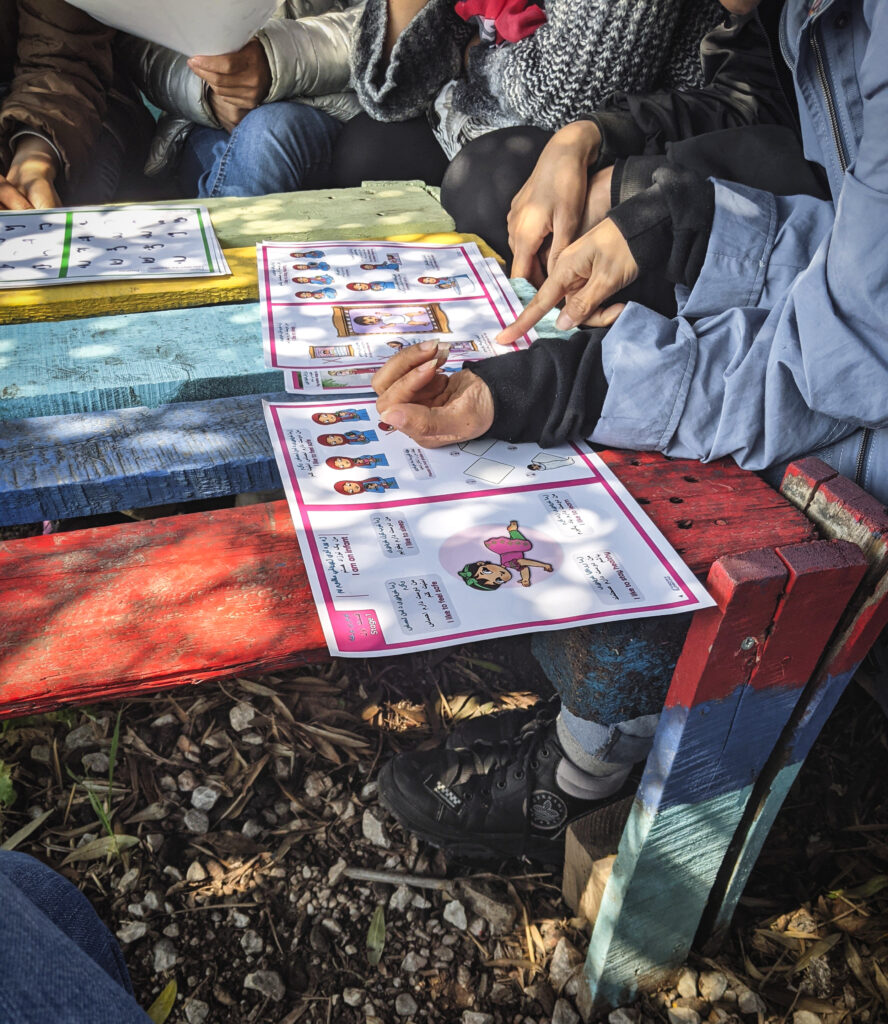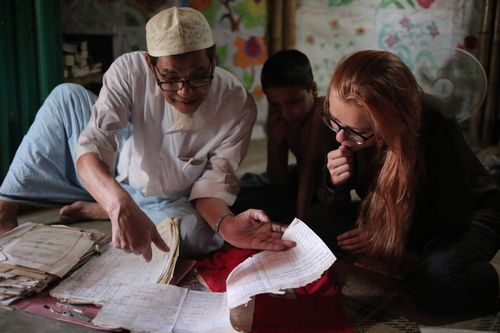The outcome I expect is to get a “yay” or “nay” in regards to the cartoons my team has developed.
But the real outcome is far more than I could ever expect.
A small, but necessary role in the humanitarian field
Representation through “cartoonization”
Stories from the field
“She’s here!” I hear a woman say as I enter the room, where a group of seven Afghan women are seated in a circle.
It’s always a daunting task. To approach a group of strangers as a complete stranger – about as much of an outsider as you can be – and hope that you form a connection.
These slightly uncomfortable situations have become the norm in my work for years, but that doesn’t make them any less comfortable. I’m learning how to enter a room as a complete stranger, handicapped by language and cultural barriers, and rely on the one universal thing that ties us together: art.
Sometimes there is someone in the room who can interpret, but usually not the case. I rely on my limited vocabulary and awkwardly exaggerated body language to do the introduction. This is usually the time when I question why in the world I’m doing any of this. These women have been through unspeakable hardships to get to where they are today, so how can I expect them to even speak with me? Doubt filled their faces – they’re seeing me as yet another researcher or journalist who is ready to ask intrusive questions about their past.
As I pull out the stacks of paper from my tattered, low-budget-traveler backpack and lay them out in front of the women, their faces start to change.
They reach for the papers and slowly start flipping through them. They’ll stop and point at something, show it to their neighbor, and smile. The papers that were once stacked are now spread all over the floor. I look around the group to see some women giggling while others are nodding in agreement and pointing to something on the page.
One woman points to the page and then points to herself.
“Same like me,” she says.
Another woman (with the highest English skills in the group) says, “I keep wanting to turn a new page to see what other cartoons you have. This is so fun!”
Good to know that someone thinks this book is, quite literally, a page-turner.
We go through each page together as a group and I have a list of questions to ask them. I frantically take notes, trying to detail their feedback as they continue sharing. After a few hours, we realize we’ll never get through everything, so I wait to see if they initiate a plan.
They ask to stay in contact – so we create a Whatsapp group. That’s where they share reference photos of their favorite food, traditional dresses, celebrations, rituals, all things Afghan. I add this to my database, which will later be used when developing the cartoons. We make plans for another meeting.
This is just a small part of the process it takes to make one of our books. Probably the most important part. Gathering small focus groups of the target community from various backgrounds in different countries. During the COVID lockdowns, I was restricted to gathering feedback remotely. While this is still possible, it’s not nearly as effective as meeting in person.
I’ve done this same process across Southeast Asia, the United States, and now for the first time, Greece.
What strikes me the most about these small focus groups with refugees isn’t necessarily their willingness to give insight on the cartoons I have, but rather their willingness and initiative to share their detailed, personal stories with me.
In the past week, I’ve shared a rough draft of my book to over 20 Afghan women in Lesvos, which ultimately sparked hours of listening to their narratives – of their childhood in Afghanistan and journey to Greece.
It is certainly not my intention to extract details from their personal stories, many of which are filled with unspeakable trauma, but it is so often what transpires.
The outcome I expect is to get a “yay” or “nay” in regards to the Afghan cartoons I’ve developed.
But the real outcome is far more than I could ever expect.
They’ll start by sharing about their fondest memories as a child, their family traditions, the first food they learned to cook.

Oftentimes, they will transition to sharing the stories I don’t expect – about their journey fleeing Afghanistan, the lives that were lost, the family members that were separated, and the sheer devastation they faced.
“I can’t share this openly with many people, but I’ll share with you,” an Afghan woman says to me just before we spend over an hour discussing her honest opinion on women wearing hijabs. Something that is difficult to share among her immediate community. I was honored that she felt comfortable to share – and the cartoons I had shown her sparked the conversation.
I’ve done the same process in the Rohingya community and had a similar response. But the process is never a one-time meeting. Years later, I’m still close with my Rohingya friends who helped me get started.




